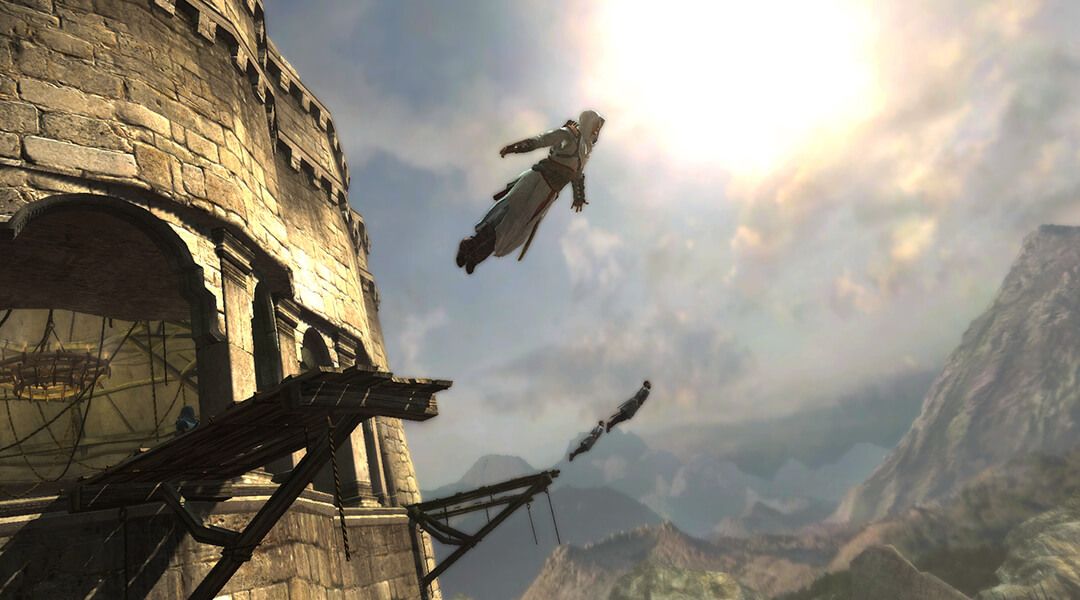Video games are an enjoyable pastime that allow participants to set aside the cares of the world and enter a universe where anything is possible. Players can visit far away galaxies, fight dinosaurs, rewrite history, and make incredible creations.
To provide such engaging opportunities, however, many game developers take a few liberties when it comes to a series' internal logic. Sometimes, breaking the rules of physics, biology, or human behavior is necessary for gamers to enjoy the experience. These broken rules often allow developers to move the story along or challenge players, without having to overthink how they build the game.
Whatever the reason, one thing is for sure: many games have some strange logic that can be helpful and fun, or confusing and downright ridiculous.
Broken Logic can be Helpful
Occasionally, game developers bend the rules in an effort to make a game more playable for participants. Take, for example, the way first-person shooters let players take multiple bullets without dying. And then, when wounded, the games let players quickly duck out of view and recover from their injuries in a matter of seconds. Some have criticized this practice, saying it paints a false picture of war in the minds of youth, but it can be argued that since these are video games, most players are well aware the fictional nature held therein.
It’s also nice when developers allow players to do incredible, death-defying acts that would surely kill a person in real life, just so the player can quickly move around a map or experience a brief adrenaline rush. In this regard, the Assassin’s Creed games quickly come to mind with the series’ iconic Leap of Faith, where characters jump from incredibly high places into mounds of hay without sustaining any injuries. Those who have played the Assassin’s Creed games can appreciate the ease these stacks of hay provide, but also have to laugh at the audacity of the act.
Letting players quickly recover from injury or leap from high places without dying aren’t the only ways developers provide helpful breaks in logic. There are also a number of games that do so for convenience of the players. Double jumping, for instance, isn’t possible in real life, but is available in many platforming games for easy movements through the map. Much like players can jump off invisible "blocks" in the air, the blocks in Minecraft can float in midair, completely negating the gravitational pull that should yank them down. Yet the game would probably suffer if gravity had a greater effect on the environment. And finally, in keeping with the box theme, there are the Item Boxes in Resident Evil, which hold onto items the player isn’t currently using, and is large enough to hold a rocket launcher but small enough that it's not seen on screen.
Most gamers will agree that these gaps in logic are necessary to make a title fun, but sometimes logical inconsistencies do the opposite, and may even prevent participants from easily completing a task. When this happens, it’s easy to become frustrated with the game and developer.
Ridiculous Breaks in Logic
When developers omit logic in a way that frustrates or confuses players, one can’t help but shake their head at how ridiculous games can be.
One of the best examples of this is in Batman: Arkham Knight. As players progress through the game, they have the opportunity to acquire trophies from the Riddler. However, players must complete tasks in order to reach the trophy. But here’s the thing: some of these trophies are sitting right behind chain-link fencing, which is impervious to Batman’s explosives and every other item in his tool belt. What makes this more ridiculous is the fact that Batman is able to take down solid brick walls with explosives, but can’t blow up or cut through a simple fence. One would think the developers could be a little more creative than that.
Even if a developer’s logic-breaking doesn’t incite frustration, it may cause a little bewilderment for gamers. Take, for example, the fact that Nintendo seems to have no qualms with giving fire-breathing or otherwise aggressive creatures to 10-year-old kids in their Pokémon games. No parent in his or her right mind would allow such a thing.
Also, how is it even possible that Frogger’s little green protagonist dies when it misses a lily pad or floating log and dunks under the water? Can’t frogs swim? And how about the characters in The Elder Scrolls V: Skyrim, which are able to take down dragons and wild beasts with ease, but succumb to the Grim Reaper when they walk off a 10-foot drop. Not only is this goofy, but it feels like the developers are purposefully finding ways to break the laws of physics to keep players in check.
Conclusion
In the end, it’s important to remember that these are video games, and they aren’t necessarily supposed to make sense. Nevertheless, gamers can’t help but recognize the inconsistency in the broken logic, even if it turns out to be helpful in the end. Despite the confusing nature of broken logic in games, it’s a practice that’s sure to continue as long as video games are made.
What are your favorite examples of nonsensical video game logic? Let us know in the comments below.




